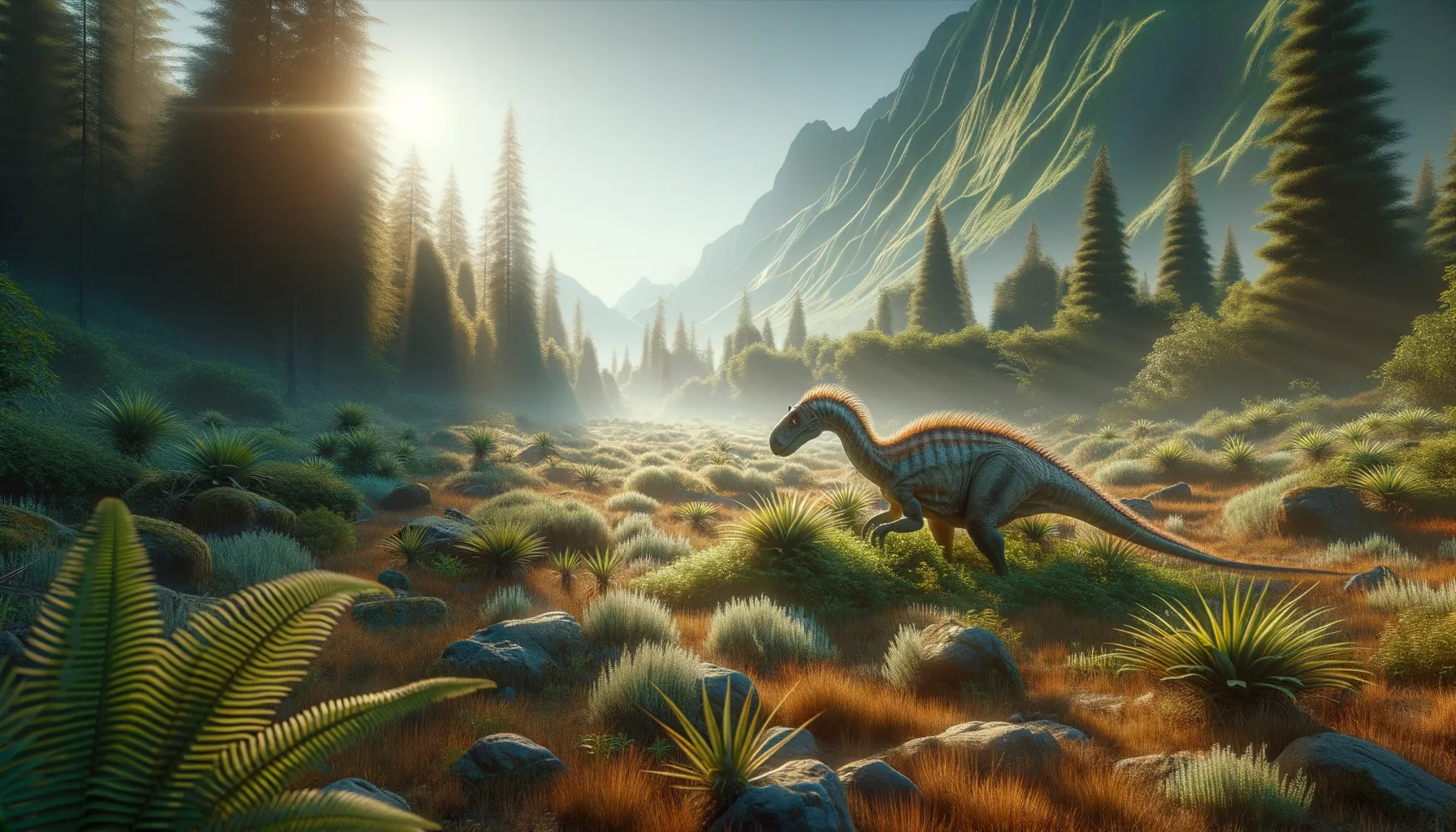
Protecovasaurus
Tiny herbivore adapting to ancient landscapes.
Period
Triassic
Length
Roughly 2 meters in length.
Height
Around 1 meter tall.
Weight
Approximately 100 kilograms.
Protecovasaurus was a small, early herbivorous dinosaur known for its resilience during the Late Triassic period. This dinosaur roamed a landscape transitioning from lush forests to arid deserts, living alongside both primitive and more advanced dinosaur species. Its fossils, though sparse, provide valuable insights into the diversification of early dinosaur lineages. Protecovasaurus is often depicted as a fleet-footed, agile creature well adapted to browse low-lying vegetation.
Diet
Protecovasaurus primarily fed on low-growing plants, including ferns and primitive conifers. Its leaf-shaped teeth were ideal for chewing and processing tough plant material, possibly contributing to the ecosystem as a primary consumer.
Hunting
As a herbivore, Protecovasaurus did not hunt but foraged for vegetation. It likely spent most of its time in search of food, using its size and speed to evade predators.
Environmental challenges
Protecovasaurus faced numerous environmental challenges, including fluctuating climates as the Triassic period transitioned towards more arid conditions. These changes would have impacted vegetation availability, requiring adaptability in food sources. Additionally, the presence of predators meant Protecovasaurus needed to develop strategies for avoiding detection and escape. The environment was also becoming biologically more competitive, with many new species emerging.
Speed
Relatively slow, adapted to a herbivorous lifestyle.
Lifespan
Estimated to live around 20 to 30 years.
First discovery
First discovered in the 1980s in Arizona, USA.
Fun Facts
- Protecovasaurus was a small dinosaur that lived during the Late Triassic period, around 210 million years ago.
- It was a herbivore, meaning it primarily ate plants, which was unusual for small dinosaurs of its time.
- Its fossils were first discovered in the southwestern United States, shedding light on early dinosaur life in North America.
- Protecovasaurus is thought to have been bipedal, meaning it walked on two legs, similar to modern birds.
- Despite its small size, the Protecovasaurus played an important role in the ecosystems of its time as a plant-eater.
- Its name means 'before Tecovas lizard,' referring to the Tecovas geological formation where its fossils were found.
- Protecovasaurus belongs to a group of dinosaurs called Ornithischia, known for their bird-like pelvises.
Growth and Development
Protecovasaurus likely experienced rapid growth to quickly reach a size that offered some protection from predators. Hatchlings would initially depend heavily on camouflage to avoid being preyed upon. As they matured, their skeletal structure would become more robust, supporting a more active and foraging-based lifestyle. The development of its limbs facilitated better mobility and grazing habits.
Habitat
Protecovasaurus inhabited the semi-arid regions of early Arizona, where it could find scattered woodlands and open plains. These environments provided various plant species for feeding and sheltered areas to escape larger predators. Seasonal variations influenced habitat makeup, affecting water and food availability. The changing landscape required Protecovasaurus to be adaptable in its home range, moving as needed to find suitable living conditions.
Interaction with other species
Protecovasaurus likely shared its habitat with various other early dinosaur species as well as primitive reptiles and mammals. It may have engaged in loose herding behaviors to increase survival odds against predators. These interactions would have been opportunistic, with multi-species herds not uncommon in seeking protection. Territorial disputes were likely more pronounced with other herbivores over feeding areas.
Natural lifespan
Protecovasaurus lived naturally for about 20 to 30 years.
Reproduction
Protecovasaurus is believed to have laid eggs, possibly in small clutches in concealed, safe locations. Juveniles were likely relatively independent after hatching, a strategy beneficial in predator-rich landscapes. Parental care might have been minimal, with young individuals relying on natural instincts for survival.
Social behaviour
Protecovasaurus may have formed small groups or flocks for protection, enhancing its ability to detect predators. Such social structures would provide benefits such as shared vigilance and coordinated movement in risky zones. Communicative behaviors likely evolved to maintain group cohesion, especially important in dense or visually limiting environments.
Fossil locations
Fossils of Protecovasaurus have primarily been found in the Chinle Formation in Arizona, providing critical data on early dinosaur evolution. The locality's well-preserved geological context offers insights into Triassic ecosystems and the progression of early archosaurian forms. No additional substantial fossil finds have been recorded outside this formation, making it crucial for research into this period.
